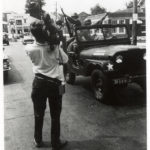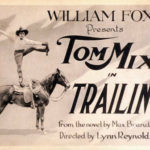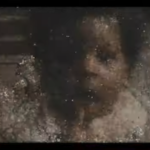2019 National Film Registry Additions Announced
United States Librarian of Congress Carla Hayden has announced the annual addition of influential American motion pictures to the National Film Registry of the Library of Congress.
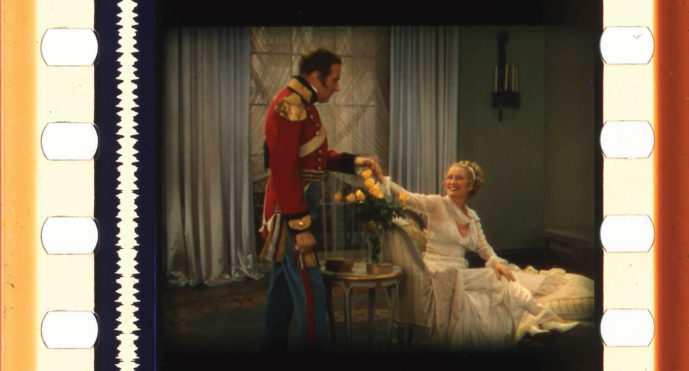
Becky Sharp. UCLA Film and Television Archive
Twenty five films are being added for their cultural, historic, and aesthetic importance. Among them are blockbusters, documentaries, silent movies, animation, and independent films, including Prince’s 1984 autobiographical hit Purple Rain, Spike Lee’s 1986 breakout movie She’s Gotta Have It, and Disney’s 1959 fairy tale Sleeping Beauty.
The Library fields public recommendations for addition to the registry, which now totals 775 titles. The registry is not restricted to a time, place, or genre. It encompasses 130 years of the American cinematic experience. It is, said Hayden, “a virtual Olympiad of motion pictures.”
Under the terms of the National Film Preservation Act, each year the Librarian of Congress names 25 motion pictures to the National Film Registry. The films must be at least 10 years old. To make the selection, the Librarian confers with the members of the National Film Preservation Board and Library specialists. Titles nominated by the public also are considered — this year, more than 6,000 titles. The most-nominated film was Kevin Smith’s 1994 Clerks. (Nominations for next year will be accepted until 15 September 2020.)
The Library makes select titles of added films available online in the National Screening Room. Copyright holders, filmmakers, and archives have already preserved many titles before addition to the Registry. When films have not yet been preserved, the Library of Congress’s state-of-the-art Packard Campus for Audio-Visual Conservation, home to more than more than 1.6 million items moving-image titles, works to ensure that the films will be preserved by some entity and available through the Library’s motion picture preservation program or through collaborative ventures with other archives, motion picture studios, and independent filmmakers.
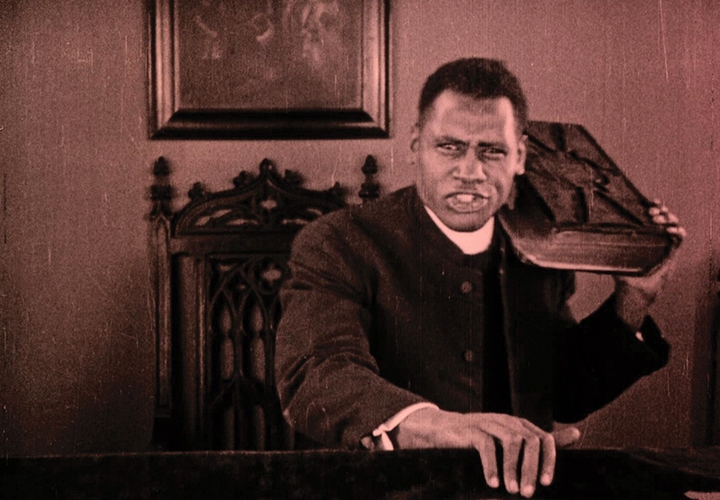
Body and Soul (1925)
The oldest film selected this year depicts footage of immigrants arriving in New York at Ellis Island in 1903, and the newest film is the documentary Fog of War in which former Secretary of Defense Robert McNamara reexamines his role in shaping American military and foreign policy. Seven motion pictures directed by women are on this year’s list, the most in a single year since the registry’s creation in 1989. They include Greta Schiller’s 1984 documentary Before Stonewall; Claudia Weill’s 1978 Girlfriends; Gunvor Nelson’s 1969 avant-garde My Name is Oona; A New Leaf, which in 1971 made Elaine May the first woman to write, direct, and star in a major American studio feature; the 2002 indie Real Women Have Curves, directed by Patricia Cardoso and starring America Ferrera; and Madeline Anderson’s 1970 I Am Somebody, which is considered the first documentary on civil rights directed by a woman of color. The last of those documents a 1969 100-day strike by 400 black hospital works — 388 of them women — in Charleston, South Carolina.
Several films added to the registry highlight the ethnic diversity of American cinema — works by African American and Chicano film makers, for example. “With this year’s National Film Registry selections,” said Jacqueline Stewart, chair of the National Film Preservation Board’s task force on diversity, equity and inclusion, “Dr. Hayden recognizes the importance of amplifying cinematic voices and stories that have been marginalized for far too long.”
2019 National Film Registry
Amadeus (1984)
Milos Forman’s 1984 film about the lives and rivalry of brash, youthful Wolfgang Amadeus Mozart and not-truly-exceptional Antonio Salieri. Peter Shaffer wrote the script from his successful play. It emphasizes the concepts of genius and obsessive envy of it. In an Oscar-winning performance, F. Murray Abraham expressed Salieri’s tortured admiration of Mozart’s work: “Why would God choose an obscene child to be his instrument?”
Becky Sharp (1935)
Miriam Hopkins (Trouble in Paradise, Design for Living) received her only Academy Award best-actress nomination for her portrayal of Becky Sharp, based upon William Makepeace Thackeray’s novel Vanity Fair about a socially ambitious woman and her destructive climb up the class system. The film was the first feature to utilize the shimmering three-strip Technicolor process. UCLA Film and Television Archive’s lengthy, complicated restoration (in partnership with the National Telefilm Associates Inc., Fondazione Scuola Nazionale di Cinema, Cineteca Nazionale (Rome), British Film Institute, The Film Foundation, National Endowment for the Arts, Paramount and YCM Laboratories) was among the earliest to garner public attention.
Before Stonewall (1984)
In 1969, New York City police raided the Stonewall Inn, a gay bar in Greenwich Village, after harassing gay New Yorkers for decades. Three days of riots ensued, launching the modern gay civil rights movement in the U.S. Directed by Greta Schiller and Robert Rosenberg, and narrated by Rita Mae Brown, Before Stonewall details the history and making of the LGBTQ community in 20th-century America through archival footage and interviews. The Outfest UCLA Legacy Project Collection at the UCLA Film & Television Archive holds elements, prints, and a new 2016 digital cinema package.
Body and Soul (1925)
African-American producer, director, writer, and distributor Oscar Micheaux made almost 40 films despite racism, lack of funding, and the whims of local film censors. Most are lost or survive only in incomplete versions. Film historian Jacqueline Stewart says Micheaux’s daring films, though sometimes unpolished, brought to the screen the politics of skin color within the black community, gender differences, class differences, and regional differences during the Great Migration. In Body and Soul, stage star Paul Robeson made his blazing film debut in dual roles as a charismatic escaped convict masquerading as a preacher and his pious brother. The George Eastman Museum has restored the film from a nitrate print, producing black-and-white-preservation elements and later restoring color tinting using the Desmet method.
Boys Don’t Cry (1999)
Kimberly Peirce’s 1999 docudrama — her first film — earned Hilary Swank an Oscar for her portrayal of a young woman who elects to live as a man in a Nebraska town. Released a year after the killing of Matthew Shepard, a gay student at the University of Wyoming, Boys Don’t Cry brought the issue of hate crimes to American public consciousness. “Unlike most films about mind-numbing tragedy,” wrote New York Times critic Janet Maslin, “this one manages to be full of hope.” Director Kimberly Pierce says now: “Twenty years later, it still feels like a miracle that Boys Don’t Cry got made. I fell in love with Brandon Teena and his desire to live and love as himself in a time and place where that was impossible. I felt a powerful conviction to bring Brandon to life on screen, so audiences would love him as I did and share my horror at his rape and murder” in 1993.
Clerks (1994)
A 23-year-old Kevin Smith made his debut film about sardonic slackers Dante and Randal, who work at a New Jersey convenience store and video store, for $27,000, reportedly with proceeds from selling his comic book collection and an insurance pay-out from losing his car in a flood. It grossed over $3 million, helped define an era, and easily garnered the most public votes in this year’s National Film Registry balloting. Roger Ebert described Clerks as “utterly authentic” with “the attitude of a gas station attendant who tells you to check your own oil.” Grungy Dante and Randal are “tired and bored, underpaid and unlucky in love, and their encounters with customers feel like a series of psychological tests.”
Coal Miner’s Daughter (1980)
Sissy Spacek earned an Academy Award for her portrayal of country music legend Loretta Lynn in this biopic about her unlikely ascent from Kentucky child bride to superstar singer. By tackling Lynn’s professional and personal struggles, it helped set the standard for musical biography on film. Tommy Lee Jones played Lynn’s husband “Doo” and Beverly D’Angelo was Lynn’s mentor, Patsy Cline. Director Michael Apted response to selection to the Registry: “For a young British director to be given the reins to capture what was truly a deep American subject was beyond rewarding.”
Emigrants Landing at Ellis Island (1903)

On July 9, 1903, Alfred C. Abadie recorded immigrants arriving in New York, and the Thomas A. Edison company marketed the short actuality as “a most interesting and typical scene” of the well-known location where the U.S. government processed millions of immigrants between 1892 and 1924. The two-minute film’s three shots record passengers stepping from ferryboat onto Ellis Island and parading past the camera. From infants to elders, they carry bags, bundles, and baskets. The images, captured in the first decade of filmmaking, were the first to show the now-mythologized boom in American immigration. You can view the footage on the Library’s website or YouTube.
Employees Entrance (1933)
An example of Depression-era escapist fare designed to draw a struggling populace to theaters: musicals, lighthearted comedies, and melodramas with big stars. Employees Entrance depicts machinations in a New York department store. Warren Williams devastatingly portrays the store’s sour, charismatic, shyster manager who callously dismisses longtime employees and bullies assistants’ love lives. Rated as one of the best of Warner Bros’ fast-paced, quickly made, relatively short 1930s features, with whip-smart dialogue.
Fog of War (2003)
Idiosyncratic documentarian Errol Morris interrogates Robert Strange McNamara, secretary of defense under John F. Kennedy and Lyndon B. Johnson. At 85, McNamara reexamines his fateful role as a U.S. architect of the Vietnam War. He also recounts the U.S. deadly World War II bombing of 67 Japanese cities, his role at the Ford Motor Company in implementing safety features to reduce deaths, and the defusion of the Cuban Missile Crisis. Historians and reviewers have praised the film, 2003 Academy Award Best Documentary Feature, for revealing the moral complexities and unresolved nature of McNamara’s understandings, but also criticized it for selective presentation of events.
Gaslight (1944)
Based on the Broadway play Gaslight (aka Angel Street), George Cukor’s suspenseful MGM film portrays a Victorian woman who is being “gaslighted,” which is to say, manipulated into questioning her own sanity. The role won Ingrid Bergman her first Oscar, with support roles for Charles Boyer as romantic hero-cum-devious villain, Joseph Cotten, Dame May Whitty, and Angela Lansbury in her debut as a cockney maid.
George Washington Carver at Tuskegee Institute (1937)
Allen Alexander, an African American surgeon from Michigan, convinced George Washington Carver to allow him to shoot 16 mm color footage of the famed botanist and inventor at Tuskegee Institute in Alabama. For his 12-minute film, Alexander used resilient Kodachrome, ensuring the colors remain vibrant. The amateur footage shows Carver in his apartment, office, and laboratory, and tending flowers and displaying his paintings. Also included is footage of a Tuskegee Institute football game and the school’s marching band and majorettes. The National Archives has digitized the film as part of its preservation and online exhibition of historically significant films of the National Park Service.
Girlfriends (1978)
In Claudia Weill’s film, a fiercely independent New York photographer played by Melanie Mayron aspires beyond doing bar mitzvahs and weddings and struggles with relationships and city life after her best friend and roommate moves out to get married. Weill critiqued historically prevalent notions of women, marriage, and motherhood. She used deft observation of minor incidents such as Mayron making a boyfriend pass the “mumps” test to capture the life of a single woman trying to make a career during the Gloria Steinem-esque era of sexual freedom and perils.
I Am Somebody (1970)
Madeline Anderson’s documentary of the 1969 Charleston hospital workers’ strike, when black female workers marched for fair pay and union recognition. Anderson participated in the strike, along with such notable figures as Coretta Scott King, Ralph Abernathy, and Andrew Young from Martin Luther King’s Southern Christian Leadership Conference. Anderson presented the courage of the strikers and local black community support during an important moment in the history of civil and women’s rights. The film is arguably the first documentary on civil rights directed by a woman of color.
The Last Waltz (1978)
Martin Scorsese’s 1978 documentary pays homage to the epic 1976 Thanksgiving farewell concert by The Band at the Winterland Ballroom in San Francisco, which featured performances by Neil Young, Joni Mitchell, Neil Diamond, Bob Dylan, Van Morrison, the Staple Singers, Emmylou Harris, and others. (The NFPF announcement of this year’s awards, band leader Robbie Robertson is quoted to say: “We played this five-hour concert and we didn’t make a mistake,” but musical director John Simon has said that post-production cleaned up “playing mistakes, out-of tune singing, bad horn-balance in the remote truck.” Only drummer Levon Helm’s contribution was “retained in its entirety,” he said in a 2014 interview.
My Name Is Oona (1969)
Swedish-American filmmaker Gunvor Nelson carved out a distinctive niche in underground avant-garde American film during the 1960s and ’70s making what she called “personal cinema,” often about perceptions of feminine beauty. In My Name is Oona, she portrayed her 9-year-old daughter’s flowing, dreamlike interactions with nature via experimental techniques such as fleeting images, dynamic editing, and slow motion. The result is a lyrical 10-minute look into the non-linear, vivid, sometimes wild or scary world of childhood memory and imagination.
A New Leaf (1971)
This film made Elaine May the first woman to write, direct, and star in a major American studio feature. She played a socially inept but wealthy botanist pursued by a conniving, murderous misanthrope (Walter Matthau). Echoing the droll sensibility of earlier Mike Nichols/Elaine May satiric sketches, A New Leaf drew on classic Hollywood comedy traditions of Depression-era screwball comedy and slapstick. May unsuccessfully sued to have her name removed from the credits because the released version did not match her vision of the film, but critics loved it and audiences flocked to it. It has become a cult classic.
Old Yeller (1957)
Robert Stevenson directed and Fess Parker, Dorothy McGuire, and Tommy Kirk starred in this 1957 Disney adaptation of the Fred Gipson boy-and-dog novel.
The Phenix City Story (1955)
Film noir came to Alabama in this film ripped from notorious 1954 events. Albert Patterson, an attorney trying to clean up his mob-controlled town is killed while running for state attorney general. Tight, tense, graphic, and stylish, it has been lauded for its semi-documentary style. Noted B-movie director Phil Carlson crafted the low-budget, violent shocker using innovative camera work, which unnerved audiences not accustomed to seeing so much on-screen violence.
Platoon (1986)
Drawing on his own experiences in the Vietnam war, Oliver Stone depicts the malignancy of war in a counterpoint to earlier heroic depictions of the conflict, such as John Wayne’s The Green Berets. Charlie Sheen portrays Stone, ably assisted by Tom Berenger and Willem Dafoe. The visceral, haunting soundtrack memorably uses Samuel Barber’s elegiac “Adagio for Strings.”
Purple Rain (1984)
Prince, already hailed as a musical giant, starred in this largely autobiographical postmodern musical. It followed him from struggling young Minneapolis musician to revolutionary funk icon. The multi-platinum soundtrack, which included his decade-defining tracks, including the title song, has already been named to the Library of Congress National Recording Registry. Director Albert Magnoli said in the NFPF’s press release: “All of us strived to create a film that would capture the attention of what we believed at the time was a small audience. None of us expected this longevity.” Apollonia Kotero was Prince’s co-star. She told the NFPF: “As a young Latina actress, being cast in Purple Rain was the opportunity of a lifetime. Roles for women that looked like me were scarce in the ’80s. Prince was never afraid of taking risks. He created a melting pot of cultures and racial interactions within his purple worlds.”
Real Women Have Curves (2002)
A few years before starring in the TV series Ugly Betty, 18-year-old America Ferrera made her film debut in Patricia Cardoso’s charming coming-of-age tale. She played an irresistible Latina teen trying to fulfill her dream amidst the challenges of her mother-daughter relationship, the immigrant experience, the perception of feminine beauty, and body standards.
She’s Gotta Have It (1986)
Spike Lee’s debut depicts a confident, single black woman who is ambivalent as three men pursue her. More than 30 years later, the landmark film remains vital, vibrant, charming, and streetwise. Lee appeared in it as the memorable Mars.
Sleeping Beauty (1959)
Disney transformed the well-known tale of the sleeping princess Aurora, awakened by a kiss, from the original Charles Perrault fairy tale (“The Sleeping Beauty of the Wood”) and The Brothers Grimm (“Little Briar-Rose”) by tweaking plot elements and characters, such as the number and role of the fairies, all to a soaring score. The film introduced moviegoers to Disney’s enduring villainess, Maleficent. The film was Walt Disney’s last animated adaptation of classic fairy tales.
Zoot Suit (1981)
Luis Valdez’s innovatively filmed, affective setting of a highly stylized stage play related the real-life story of Los Angeles’ 1942 “Sleepy Lagoon Murder” and the racially charged “Zoot Suit Riots” it provoked. Daniel Valdez, Edward James Olmos, Charles Aidman, and Tyne Daly starred; Daniel Valdez and Lalo Guerrero, the “father of Chicano music,” contributed music.
— from NFPF release and research
Previous Post: How Deeply Deceptive? Dealing with the Deepfake.
Next Post: Digitizing Hidden Special Collections and Archives



